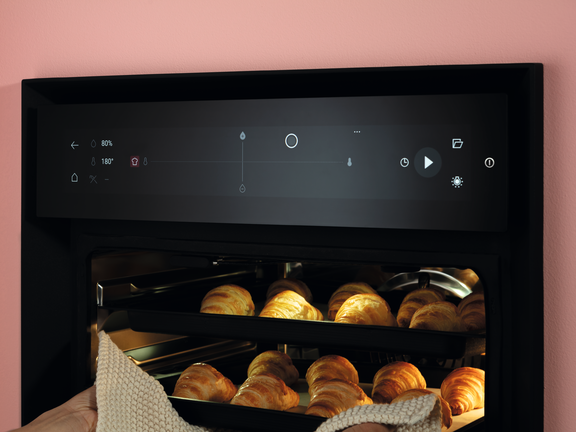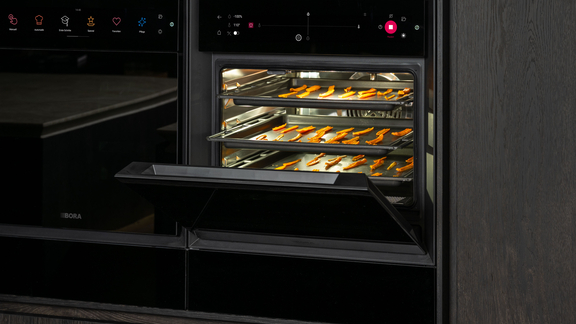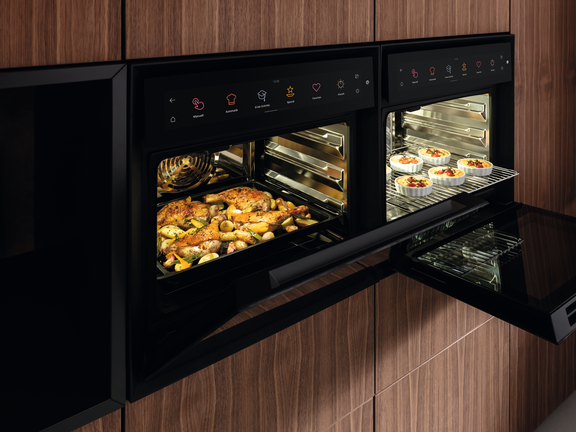

Steam cooking is a gentle and healthy way of preparing food.
There are now numerous combination appliances with this function, which also replace a conventional microwave and in some cases even an oven. But how does steam cooking work and what advantages does it offer? We tell you everything you need to know about this method of preparation.
Water vapour not only escapes when you heat food - it can even be used for cooking. In principle, anything you can cook in a pot can also be cooked with steam. These include vegetables from asparagus to spinach, side dishes such as rice and potatoes, desserts such as yeast dumplings and many types of fish and meat.

When steaming food, it is placed on a large, perforated stainless steel tray, surrounded by hot steam It cooks food evenly at up to 100 °C. Depending on the product, the temperature can be adjusted during steam cooking.
Steaming is easy with a steam cooking insert for the cooking pot, which you place over the simmering water. There are metal versions for this, and steaming is also possible with a bamboo basket. You can achieve better results with a steam cookerspecially developed for this purpose. It offers several levels for cooking and is visually reminiscent of an oven.
There are a whole range of advantages that steam cooking has over traditional cooking in water:
A disadvantage of pure steam cookers: They only master this one type of preparation. In this respect, appliances such as steam ovens are superior for steam cooking. They combine the functions of a steam oven and an oven.
With the BORA X BO, you can achieve the best results when steam cooking in the oven - juicy, tender, crispy. To make operation easier, important presettings for temperature and humidity are stored in the automatic programmes. Beginners should follow the instructions when steaming. Experienced chefs can also select these manually. The BORA multi-drawer rounds off the outstanding convenience as required.

Innovative steam and hot air technology as well as cooking on three levels are combined with simple operation via touch display - for perfect results.
Steam cooking is basically uncomplicated, but has some special features. The following tips will help you achieve optimum results.

This means that not only vegetables, fish and meat can be steamed, but also pasta and rice.